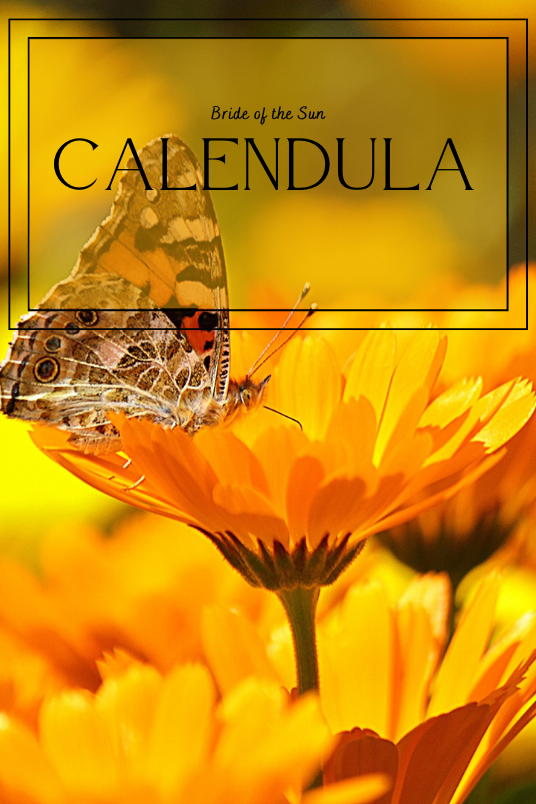Calendula as a Symbol of Death
Due to Shakespeare’s influence on the Victorian Era, specifically the Victorian Language of Flowers, Calendula has become associated with death. In his writings, the prolific playwright references the flower numerous times, referring to Calendula by its other name – marigold. The dramaturge employs the vibrant flower as a conduit to grief, a decorator of tombs, and a blanket for deathbeds.
To understand how Shakespeare’s expression of Calendula became so integral to its symbology, you must first understand the profound impact Shakespeare had on the Victorian Era. Shakespeare’s writings were incredibly influential on the practice of floriography – the secret language of flowers that was culturally popular at the time. There was a near cult-like reverence for Shakespeare during the Victorian Era, with his words treated as prophecy.
And with the playwright mentioning over fifty types of flowers throughout his literature, these flowers took on deeper symbolic and mystical meaning dependent on the traits Shakespeare attributed to them. Calendula is no exception.

The Winter’s Tale and Calendula
The most notable of these mentions comes from The Winter’s Tale, in which Perdita exclaims these words while handing out flowers at a sheep-shearing festival:
“Here’s flowers for you:
Hot lavender, mints, savory, marjoram,
The marigold, that goes to bed wi’th’ sun,
And with him rises, weeping.”
– The Winter’s Tale, Act 4, Scene 4
In this passage, Perdita refers to Calendula’s habit of following the sun with its petals until the sun sets or “goes to bed.” As the sun rises, the morning dew that collects on the flower’s petals and leaves is akin to the tears of grief shed by a lover missing their beloved. In this passage, Shakespeare uses Perdita to articulate the deep devotion Calendula has for the Sun, to the extent that the flower displays deep despair when separated from the daystar.

Calendula in Pericles
In Pericles, Marina declares:
“No, I will rob Tellus of her weed,
To strew thy green with flowers: the yellows, blues,
The purple violets, and marigolds,
Shall as a carpet hang upon thy grave,
While summer-days do last.”
Tellus is the classical name for Mother Earth, whose “weeds” are her clothing, fashioned from flowers. Marina plans to gather flowers of varying colors to decorate her nurse, Lychorida’s grave. Still, it’s interesting that she mentions both violet and Calendula (marigold) by name. Like Calendula, violets have connections to being used in funeral décor, particularly by the Ancient Greeks and Romans.

Shakespeare’s “Bridal Song” and Calendula
Shakespeare shows a fondness for figuratively adorning graves with Calendula in his poem “Bridal Song.” Shakespeare crafts intricate symbolism for many flowers in this poem, such as roses, daisies, primrose, and larkspur. To typify Calendula, he intonates:
“Oxlips in the cradles growing,
Marigolds on deathbeds blowing.”
It is important to note that oxlips bloom in late spring to early summer but wilt at the first sign of excessive heat. On the other hand, Calendula is known for not only withstanding the harsh summer heat but reveling in it. In these passages from Pericles and “Bridal Song,” Calendula’s purpose seems to be the burial décor that can remain where other flowers cannot, providing consistent company for the dearly departed.








One Reply to “How Shakespeare Inspires Calendula Symbolism and Meaning”